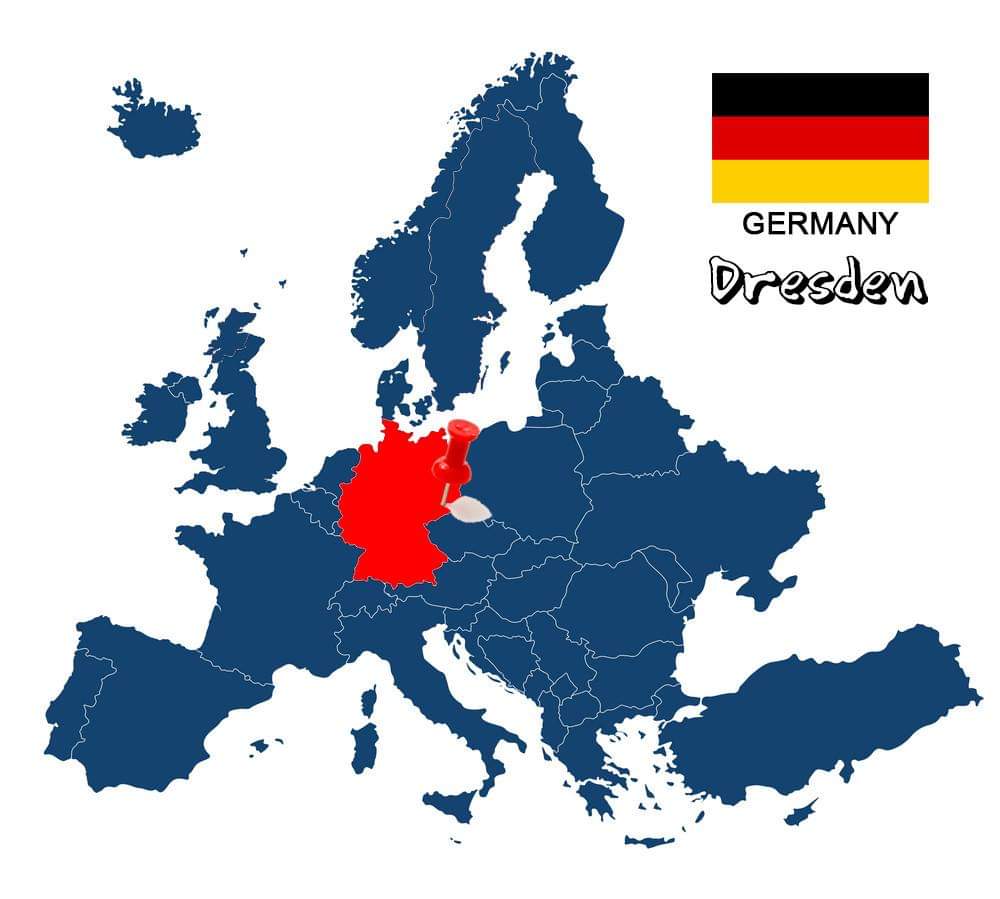
If I say it was a lifelong dream to visit Dresden sometime, I'd be lying. To be perfectly honest I did not even know its existence, but sometimes beauty does not hide in the famous and well-publicized, but in the unknown and the unexpected, where the expectations are lower and the images more virgin. That was Dresden for me. Visiting Berlin, I was looking for a city to make an excursion. Considering several options, I came up with the proposal made to me by an acquaintance of mine who lived there. "Go to Dresden without a second thought," he said, and fortunately I heard him. In the end, the capital of Saxony stole the show from the whole trip and made me reminisce for a long time about its inexhaustible and aristocratic beauty.
A few words about the city
Dresden is a city in Germany and the capital of the state of Saxony. It is built in a valley on the banks of the river Elba, and the population in the area is estimated at 541,304 inhabitants. In addition, it is part of the metropolitan area of the Saxon triangle (i.e. Dresden, Leipzig and Chemnitz) with a population of over 3,200,000 inhabitants! The town has a long history, having been the main residence for the kings of Saxony for decades. Unfortunately, during World War II, it received sort of bombings and several destructions, however, thanks to the extensive restoration program, within a few decades it managed to recover and regenerate from its ashes, reminiscent of its old, baroque aura. So I have chosen for you, what I consider to be worthy of attention for someone who is visiting the city for the first time.
Frauenkirche
The Church Of Our Lady (Frauenkirche) is a characteristic example of Baroque architecture, which was erected between 1726 and 1743. On the 13th of February 1945 the church was totally destroyed by the historic bombardment of the city, but it has now been completely restored on the original plans of the 18th century and dominates the city center. The interior of the church is extremely impressive although it is simple, adorned with beautiful statues and elaborate frescoes. The entrance is free and open to all, while the queues during the morning hours are particularly long, due to the temple function.
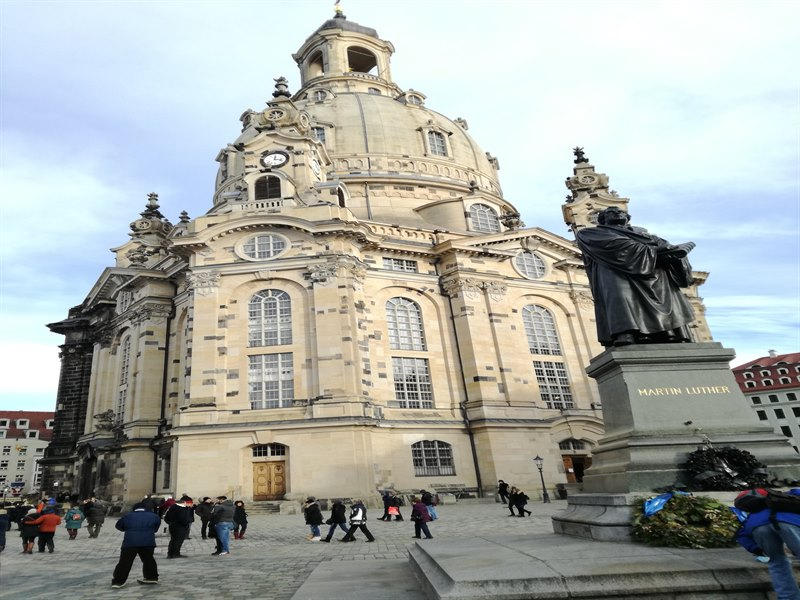
Zwinger Palace
You will probably be bored reading the word "baroque", but the Zwinger Palace is a great example of German Baroque architecture. It is situated on the banks of the river Elbe, and the erection of the palace was made in the time of Augustus, Elector of Saxony, who on returning from a tour in France gave orders for the design of a royal residence of similar magnificence to that of Versailles. The project plans were drawn up by architect Matthaus Daniel Poppelmann in 1711, and construction was carried out in stages until 1733. And this giant Palace was a victim of the 1945 bombing, but it was restored to its original state based on a specific restoration plan after the end of the war. Today it is one of the most important sights of the city, with the impressive inner courtyard decorated with ornate fountains, sculptures and gardens. Inside it is housed some of the most interesting museums of the city with exhibitions of paintings, statues, porcelain, watches, etc. works of art, with the most important of them the gallery of the Old Masters (Gemaldegalerie Alte Meister). The ticket costs 10e (7,5 e the reduced) and includes all exhibitions of the museum.
Semperoper
In the square of the Theater (Theaterplatz) we find one of the most beautiful opera buildings in the world, the Semperoper. Built in 1841 by the famous architect Gottfried Semper, hence its name (for those who doubted, yes in Baroque style). The Dresden Opera has exquisite acoustics and a mythical past, since it was there that the premieres of some of the most iconic works of Wagner and Strauss. Unfortunately, it did not escape the fury of the Allied bombardments, but this building was restored and stands impressive in the center of the city. If when you are in the city, you catch some concert of the Dresden State Orchestra; do not miss the opportunity to attend it, since this is one of the leadings in Europe.
Bruhlsche Terrasse
The balcony of Dresden (Bruhlsche Terrasse) is the most suitable spot to enjoy the panoramic views of the city and relax between your guided tours. It is a route by the river Elbe, along the Bruhlsche Palace, which owes its nicknameto Heinrich von Bruhl, who built the palace of the same name in 1737 on the site.
Beneath the balcony, stretch the Dresden Fortress, the oldest Renaissance construction of the city. There you can see the only surviving entrance gate (400 years old) in old Dresden and wander through its mysterious crypts. In the walls of the palace, we find the Furstenzug, which in English means "the procession of princes" and is the largest porcelain fresco in the world (102 meters!). It was created by Wilhelm Walther between 1871 and 1876, while 25,000 Meissen tiles in black, white and yellow tones were needed for its creation, with a total length of 120 meters. The Fresco depicts the parade of 35 Kings and Dukes of Saxony on horseback or on foot.
Residenzschloss
The Royal Palace of Dresden (Residenzschloss) is one of the oldest buildings in the city, about 400 years old and was the residence of all Saxon rulers from 1485 to 1918. Certainly externally it cannot be compared with other European palaces, as it is neither so large nor particularly impressive, but internally it exudes a dazzling Renaissance aura. Today it serves as a museum complex and hosts treasures from the Dresden State Art Collection, including the “Grunes Gewolbe”, the green dome, an immeasurable collection of 3,000 objects made of precious stones. The ticket costs 15e and includes the entrance to the palace, but also the individual museums.
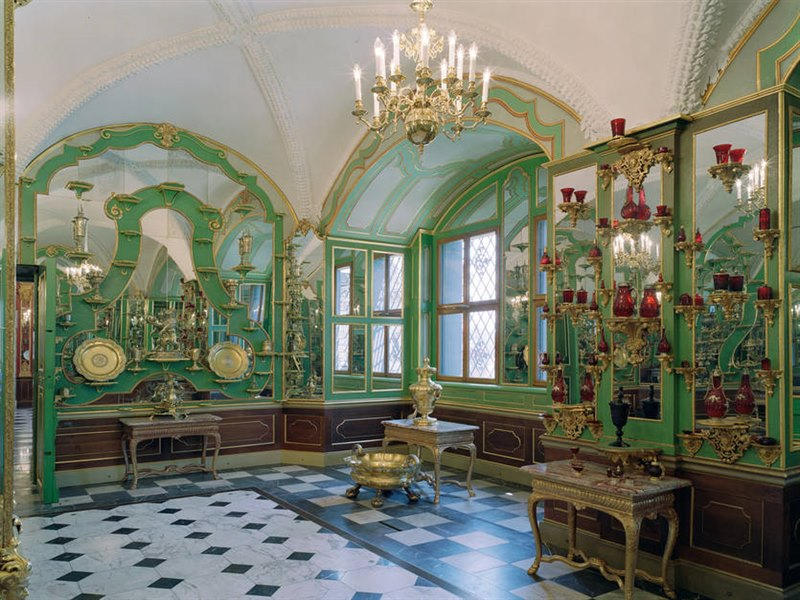
Albertinum
Albertinum is one of the most impressive museums of Modern Art in the world, where two leading collections of painting (New Masters) and sculpture (Sculpture Collection) are exhibited, from the Romantic period of the 19th century until today. A tour of the revamped spaces of the adjacent museum complex will give you the opportunity to admire works of important representatives of German Romanticism, such as Caspar David Friedrich, Van Gogh, Rodin and Gerhard Richter. Admission costs 12e (9,5e the reduced).
Neustadt
Passing over the Elbe River, you will leave the Old Town (Altstadt) and head towards the new (Neustadt). This side of Dresden is full of elegant and wide streets, luxurious residences, but also alternative theatres and galleries. Here the baroque rhythm is not so pronounced, since most buildings are built after World War II. As another host, you will be greeted at the beginning of Neustadt the Golden Horseman (Goldener Reiter). This is an impressive golden statue of Augustus on horseback created in 1736.
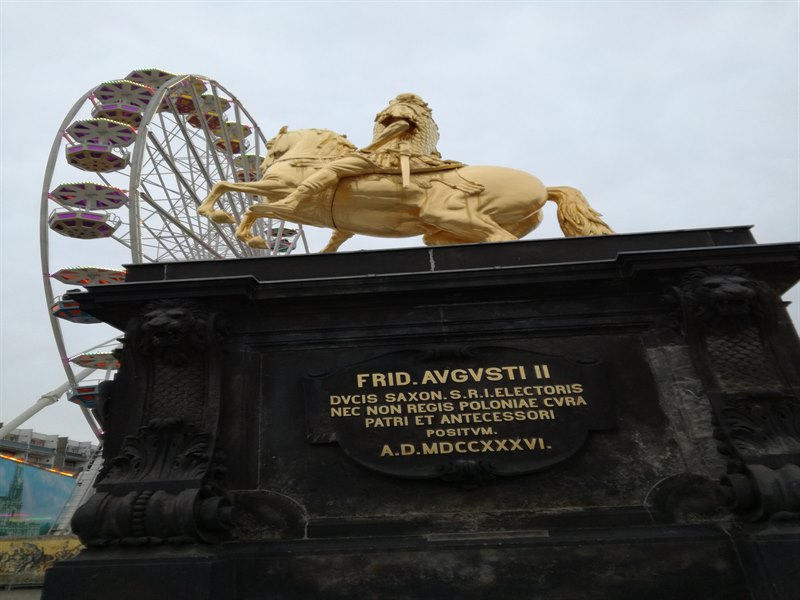
A few meters farther there is the Japanese Palace (Japanisches Palais), a beautiful palace, built in 1715 which houses a large collection of porcelain. The oxymoron with the Japanese palace is that it was never inhabited, but was mainly used as a library and exhibition space.
Continuing your tour, you will find yourself in the largest square of the city, Albertplatz, which is full of life all year round, as it is full of cafes and restaurants, but also all kinds of shops. During the Christmas period in this square is set up the Christmas market of the city (Striezelmarkt), which is the largest in Saxony and the oldest in the whole of Germany. So do not miss the opportunity to drink mulled wine, eat traditional delicacies and warm up with the improvised stoves that burn in every corner.
How to go
Thessaloniki is connected by air with Dresden and Dresden Airport via Germania. With proper planning one can find tickets starting from 206€ round trip. Alternatively, you can fly to Berlin and from there continue by FlixBus (9 euros) or train.
Where to stay
In Dresden the last thing you need to worry about is your stay, as there are enough accommodations for each "budget" to meet the demands in the city. A good low budget option is the B&B Hotel Dresden, which is considered a remote center, as it is only 7 minutes from the Zwinger Palace.
How to move
Although the main sights and interest of Dresden is focused on its historical center, which can be reached on foot, in the city there is an excellent public transport system. Due to the size of the city, there, is of course, no metro, but you can use buses, trams and also S-Bahn trains, with the single ticket costing 2.30e.
What to eat
The most special and traditional delicacy you will find in Dresden is called krauterhandbrot. It is a stuffed slice of bread with melted cheese, herbs and pieces of bacon, drizzled with sour cream and chopped spring onion. Since you are in Germany, you should try sausages, with the most favorite, the one with Curry, namely curry wurst. Also, due to the large percentage of Turks in the city, there are dozens of shops with doner, where you will find delicious doner kebap. Finally, in Dresden you will taste very good schnitzel, and during the winter months do not forget to try some of the soups of the region. As for what to drink, I think this is meant, since beer is the king of all drinks in Germany.
Useful information

In Dresden we travel with a passport or a new type of Police ID, where the details are indicated in Latin characters.
In Dresden the language used is, of course, German. But most, if not all, speak English, so ask for clarification in English.
The currency of the country is the euro.
Dresden is an hour behind Greece (GMT +2).
In Dresden there is no Greek embassy or any Greek consulate so if you need anything you should contact the nearest one, which is located in Leipzig at Mehringstr 20 Markkleeberg 04416 and his phone is + 49 341 5648090
The weather in Dresden is usually dull with the sun making its appearance rarely, while in winter the temperatures are quite low with snow being very common. So the most ideal time to visit the city is either the cool spring or the relatively warm summer.
Recommended excursions → Berlin, Leipzig, Kemnitz
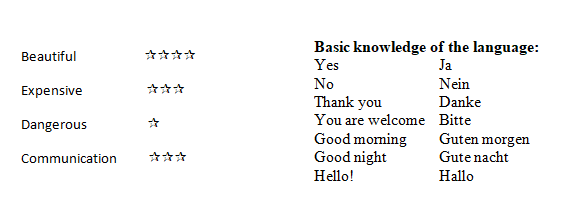
If this article seemed interesting or contributed to your quality information, then you can like my facebook page: o_thessalonikios or follow me on instagram!
Mouzakidis Pantelis









